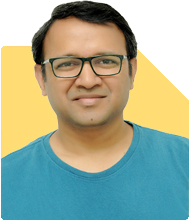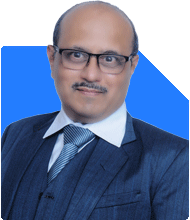How Do I Invest My Mom's Pension Savings (3L) For Regular Income?
Anil Rego | Answer |Ask -Follow
Financial Planner - Answered on Jul 26, 2024
He’s an expert in income tax and wealth management.
He has completed his CFA/MBA from the ICFAI Business School.... more

Financial Planning - Need help with my dad's pension. My mom (49y) has around 3L in savings (from my dad's pension) and will be getting 35,000 per month as the pension. How do I go about investing this? This is her savings, so don't want something very risky and we won't need the cash in short term. Let me know the geniuses of the sub. I am thinking a mix of High dividend MFs + Debt bonds on wint wealth. Please do let me know as we need the interest/dividend income every once in a while if not every month. I have a corporate insurance with 5L cover and Personal Insurance with 25L cover which will 3x in 3 years (currently 37.5L + 25L).
Given your mother's age and the situation, you may consider investing the monthly pension into a mix of Largecap, balanced advantage and Debt/Equity arbitrage mutual funds in the ratio of 20%, 50%, 30% respectively. This might help build a good risk-adjusted corpus in the long run. Assuming that you may need certain amount every quarter, you may consider quarterly swp from the funds which can give you a fixed amount. Depending on interest/dividend income might not be advisable since there is some volatility involved. I hope such a mechanism can help you build a good risk-adjusted returns along with receiving frequent amounts as needed.
Best Regards,
Anil Rego,
Founder & CEO,
Right Horizons
You may like to see similar questions and answers below
Omkeshwar Singh | Answer |Ask -Follow
Head, Rank MF - Answered on Dec 07, 2021
Ramalingam Kalirajan |10894 Answers |Ask -Follow
Mutual Funds, Financial Planning Expert - Answered on May 08, 2024
Ramalingam Kalirajan |10894 Answers |Ask -Follow
Mutual Funds, Financial Planning Expert - Answered on Jul 10, 2024
Ramalingam Kalirajan |10894 Answers |Ask -Follow
Mutual Funds, Financial Planning Expert - Answered on Jul 26, 2024
Patrick Dsouza |1429 Answers |Ask -Follow
CAT, XAT, CMAT, CET Expert - Answered on Dec 16, 2025
Nayagam P P |10858 Answers |Ask -Follow
Career Counsellor - Answered on Dec 16, 2025
Nayagam P P |10858 Answers |Ask -Follow
Career Counsellor - Answered on Dec 16, 2025
Samraat Jadhav |2510 Answers |Ask -Follow
Stock Market Expert - Answered on Dec 16, 2025
Samraat Jadhav |2510 Answers |Ask -Follow
Stock Market Expert - Answered on Dec 16, 2025
Nayagam P P |10858 Answers |Ask -Follow
Career Counsellor - Answered on Dec 16, 2025
Nayagam P P |10858 Answers |Ask -Follow
Career Counsellor - Answered on Dec 16, 2025
Ramalingam Kalirajan |10894 Answers |Ask -Follow
Mutual Funds, Financial Planning Expert - Answered on Dec 16, 2025
Nitin Narkhede |113 Answers |Ask -Follow
MF, PF Expert - Answered on Dec 15, 2025
Nitin Narkhede |113 Answers |Ask -Follow
MF, PF Expert - Answered on Dec 15, 2025


























